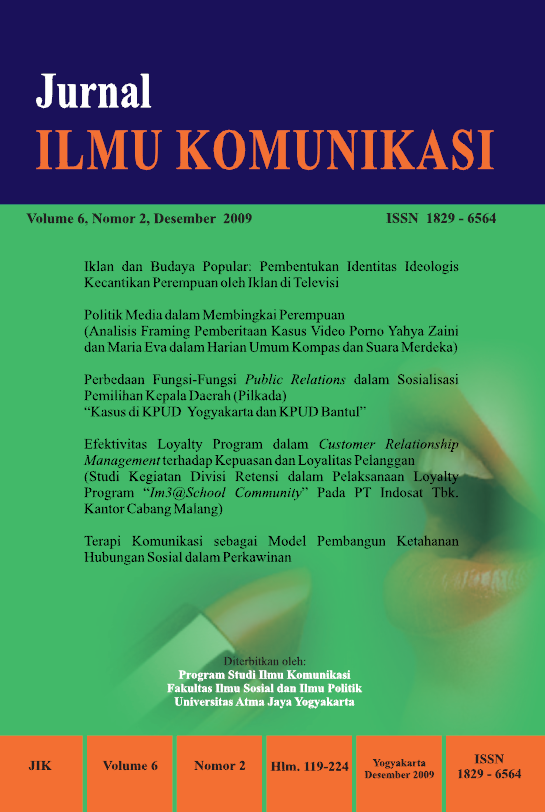Perbedaan Fungsi-Fungsi Public Relations dalam Sosialisasi Pemilihan Kepala Daerah (Pilkada) “Kasus di KPUD Yogyakarta dan KPUD Bantulâ€
DOI:
https://doi.org/10.24002/jik.v6i2.201Abstract
Abstract: This research attempts to analyze the differences of Public Relations (PR) function in local election (Pilkada). Pilkada is a democratic process in Indonesia. Government needs big participation of society, as one successful point of pilkada is participation of society. Effort to bring public politics participation cannot be separate from politics socialization process. Socialization process is public attitude establishment and politics orientation process. Pilkada socialization carried out by KPUD (Komisi Pemilihan Umum Daerah) as executor. To make an effective socialization to public, KPUD needs to use specific function called Public Relation. Communication activity between organization and its public divided into some part of PR function, including publicity, advertising, press agentry, lobbying, issue management, investor relation and public affair. Basically, implementation of PR function in the process of PILKADA may be different in each region. It becomes the reason why author want to compare KPUD Yogyakarta and Bantul. Governance system differences among both regions would affect in government’s socialization policy. Those differences depend on population, social classes, demographic condition and personal motivation. It is also effecting in PR function held by government, as in media and in society as target operationDownloads
Published
How to Cite
Issue
Section
License
Jurnal ILMU KOMUNIKASI is an academic journal. As such, it is dedicated to the open exchange of information. For this reason, JIK is freely available to individuals and institutions. Authors who publish in Jurnal ILMU KOMUNIKASI will release their articles under the Creative Commons Attribution (BY) License. This license allows anyone to copy and redistribute the article in any medium or format as well as remix, transform, and build upon the material for any purpose, even commercially as long as they credit the authors for the original creation. For details of the rights authors grants users of their work, see the "human-readable summary" of the license, with a link to the full license. (Note that "you" refers to a user, not an author, in the summary)
 This work is licensed under a Creative Commons Attribution 4.0 International License.
This work is licensed under a Creative Commons Attribution 4.0 International License.














